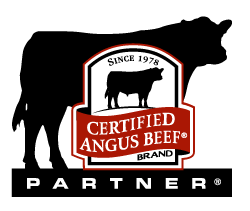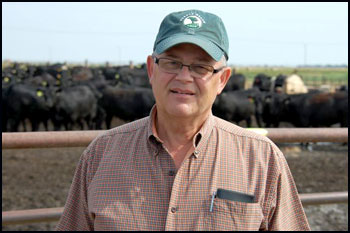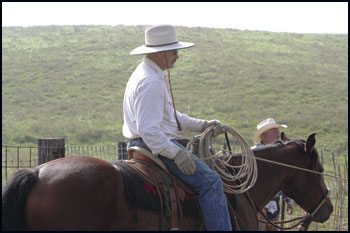CAB Mythbusters
What they thought they knew that just ain't true.
I'll admit it. Some myths are of our own making. We throw around terms like "CAB-licensed" when talking about everything from restaurants to packers to feedlots.
 So what exactly does that mean? Well, various things on various levels. Ultra-simplified, it's a close working relationship with the Certified Angus Beef®(CAB®) brand. It is the right to advertise and sell CAB burgers or have those third-party government graders stamp carcasses as accepted. When it comes to the feedlot sector, I can tell you what it doesn't mean as I debunk this puzzler:
So what exactly does that mean? Well, various things on various levels. Ultra-simplified, it's a close working relationship with the Certified Angus Beef®(CAB®) brand. It is the right to advertise and sell CAB burgers or have those third-party government graders stamp carcasses as accepted. When it comes to the feedlot sector, I can tell you what it doesn't mean as I debunk this puzzler:
Myth: Cattle must be fed at a "CAB feedlot" to qualify for the brand.
Fact: To have cattle evaluated for the CAB brand, they simply need to be marketed to a licensed packer. Good news: That includes 85% of the North American packing base. All the "big" packers, like JBS, Tyson, Cargill and National Beef are on that list, so it would be more likely that you bring cattle to a CAB licensee than not.
It doesn't matter if those cattle were at the largest feedyard in the United States or home-raised with 19 other penmates. As long as they enter a licensed packing plant, they'll first be evaluated for the live-animal specification and, if they pass that, they'll be railed off for carcass assessment in the cooler the next day.
So, that clears up the myth, but it might still leave you wondering what the heck a CAB-licensed feedlot is.
Right now, there are about 70 feedyards in 16 states that make up the Feedlot-Licensing Program (FLP), a network of partners that work closely with the CAB supply development team. They manage cattle for the high-quality end point and aim to work with cow-calf producers to improve their herds. To that end, they share data with customers and with CAB.
What's in it for them? Let me share a few comments.

Pratt Feeders Manager Jerry Bohn
Jerry Bohn of Pratt Feeders licensed the yard in 2003 because: "Our staff and our company want to be known as a feeder of high-quality cattle. They work really hard to get good cattle, get them into our system and then get the information back to the owner — CAB helps us do that — so they can digest and use that information to make changes in their operations, which in turn will be better for us and the consumer."
Pratt is a 40,000-head yard, but feeders of any size can participate in these beef improvement strategies.
Mike Hora, of Hora Prime Beef, near Washington, Iowa, has a commercial Angus cow herd and operates a 500-head feedlot.

Hora Prime Beef owner Mike Hora
"Being licensed is an impetus for me to do better. It has spurred me to better genetics and better feeding," Hora says.
Our team views our relationship with partner yards in much the same way. They inspire us to do more, ask better questions and find answers. They help us keep a finger on the pulse of the feeding industry. And, perhaps most importantly, they give us a great starting point when producers call our office and say, "I am thinking about feeding cattle. What next?"
I dusted off the 2007 news release, "What it takes to be a CAB-licensed feedlot" (www.cabpartners.com/news/press/051607What it takesNR _2_.pdf), which explains it in more depth. The numbers are the only thing out of date, because the mission of the feedlot program has been the same since its creation more than a decade ago.
Editor's Note: To get a regular dose of this feature, visit the Black Ink Blog at www.blackinkwithcab.com.













